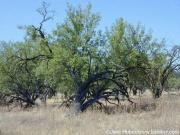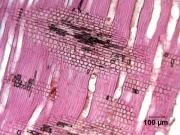Difference between revisions of "Almond"
(username removed) |
m (Text replace - "== Authority ==" to "== Sources Checked for Data in Record ==") |
||
| Line 19: | Line 19: | ||
| − | == | + | == Sources Checked for Data in Record == |
* ''The American Heritage Dictionary'' or ''Encarta'', via Microsoft Bookshelf 98, Microsoft Corp., 1998 | * ''The American Heritage Dictionary'' or ''Encarta'', via Microsoft Bookshelf 98, Microsoft Corp., 1998 | ||
Revision as of 13:16, 29 April 2016
Description
Hardwood trees in the Rosaceae family (Prunus amygdalus, P. dulcis - sweet almond and P. dulcis amara - bitter almond) native to Asia and northern Africa. Almond trees are now common in Europe, east Africa and California. The fruit and oil from the sweet almond are used for food while the oil from the bitter almond is used for flavoring. Although the tree is grown commercially for its fruit and oils, the wood has been used for inlays, small turned articles, tools, bowls and fine cabinet work. Almond wood is strong and hard with a fine straight grain. The water soluble gum that exudes from wounds on the tree has been mentioned as a watercolor binder. Almond trees are closely related to cherry trees.
Synonyms and Related Terms
mandler (Dan.); Mandel (Deut.); almendro (Esp.); amandier (Fr.); amandel (Ned.); Mandorlo (It.); amendoeira (Port.)
Additional Images
Sources Checked for Data in Record
- The American Heritage Dictionary or Encarta, via Microsoft Bookshelf 98, Microsoft Corp., 1998
- Encyclopedia Britannica, http://www.britannica.com Comment: "almond" [Accessed May 24, 2003].
- Wikipedia, the free encyclopedia, at http://www.wikipedia.com Comment: http://en.wikipedia.org/wiki/Almond (Accessed Mar. 15, 2006) -for non-English terms
- F. H. Titmuss, Commercial Timbers of the World, The Technical Press Ltd., London, 1965
- R.Gale, P.Gasson, N.Hepper, G.Killen, "Wood" , Ancient Egyptian Materials and Technology, Cambridge University Press, Cambridge, p. 334-371., 2000



